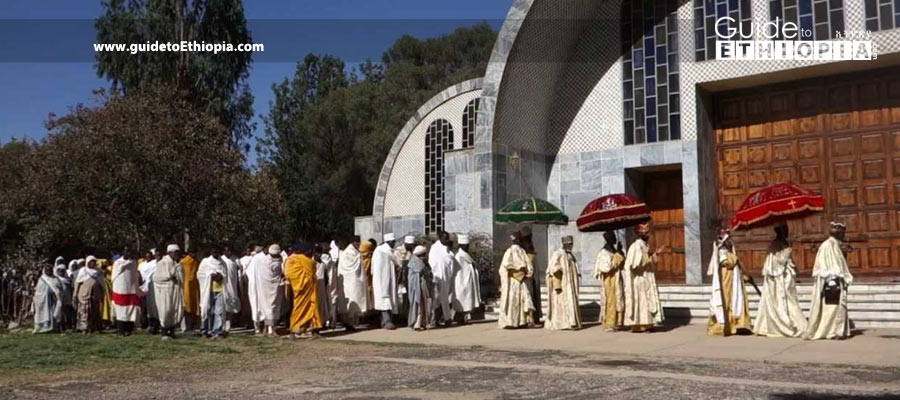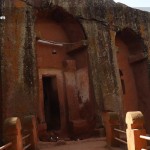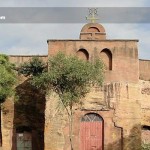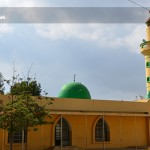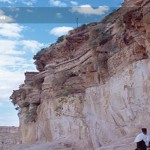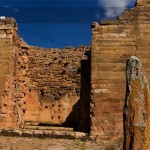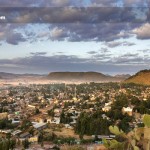The present church, built in the mid-17th Century under the Emperor Fasilidas, is located south of the original five-aisled church built at the time of the Axumite Empire. The outline of the 4th century building, considered to be the oldest church in Africa south of the Sahara, can be traced in the 3.4m high podium on which the present church stands. The original church was burned down by Queen Gudit in the 10th Century, and rebuilt only to be destroyed by Ahmed Gragn (the Left Handed) in 1535.
Fortunately, the Portuguese visitor FranciscoAlvarez described it just before its destruction from his observations of 1520. Traces of the Axumite walling can be seen in the large dressed corner stones on the southern and eastern sides of the podium. Between them, the rubble walling steps back each metre up the face, with a course of slate to shed water from the ledges formed by the stepping. The existing building is not accessible to women: oral tradition links this to the sack of Axum by the Jewish Queen Gudit, but religious authorities explain that its origin as a monastic house is the reason. It would appear that this prohibition did not apply to the earlier church, as the Prophet Mohammed’s wives, seeking sanctuary at Axum, brought back descriptions of the beauty of the church and its murals. The name of the church derives from its altar stone that is said to have come from Mount Zion.

